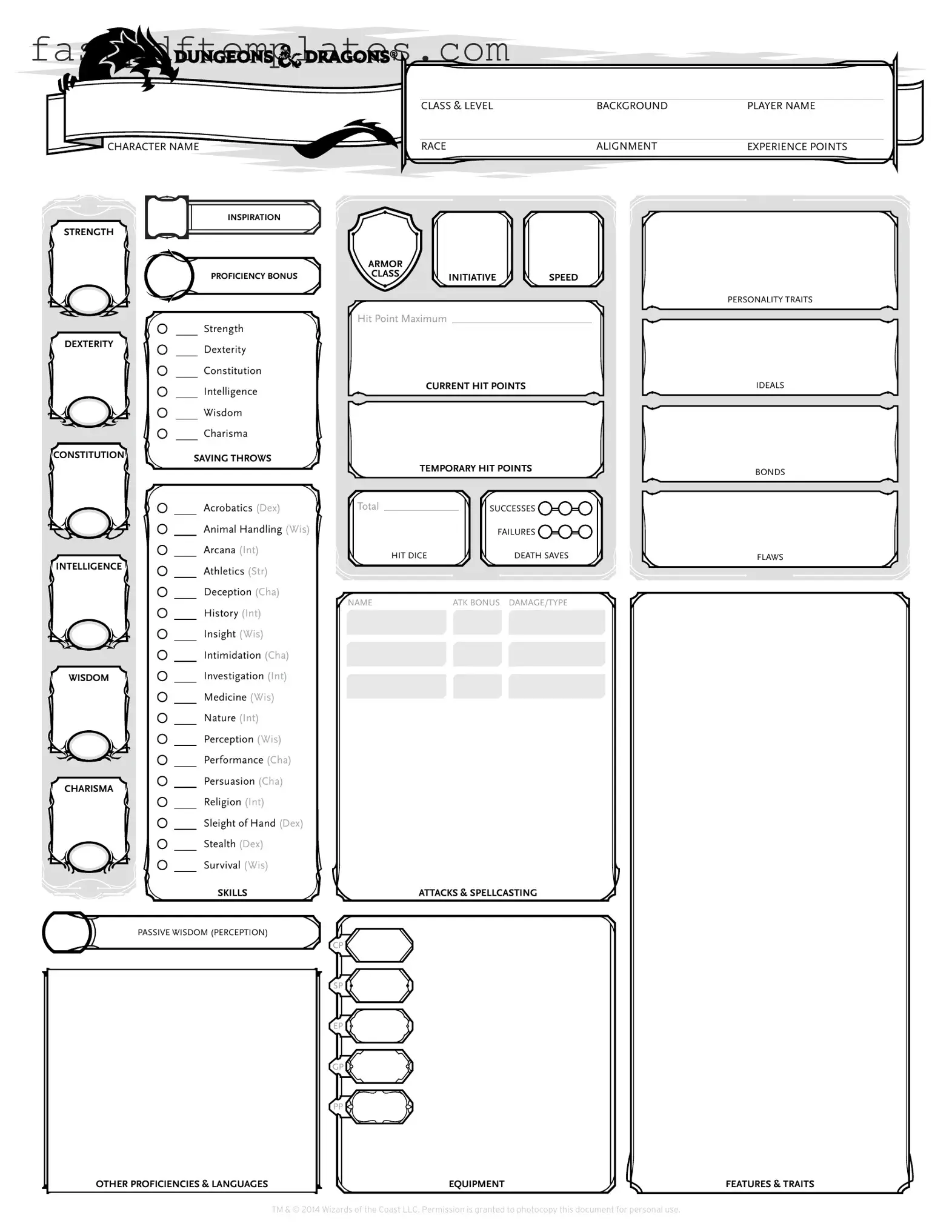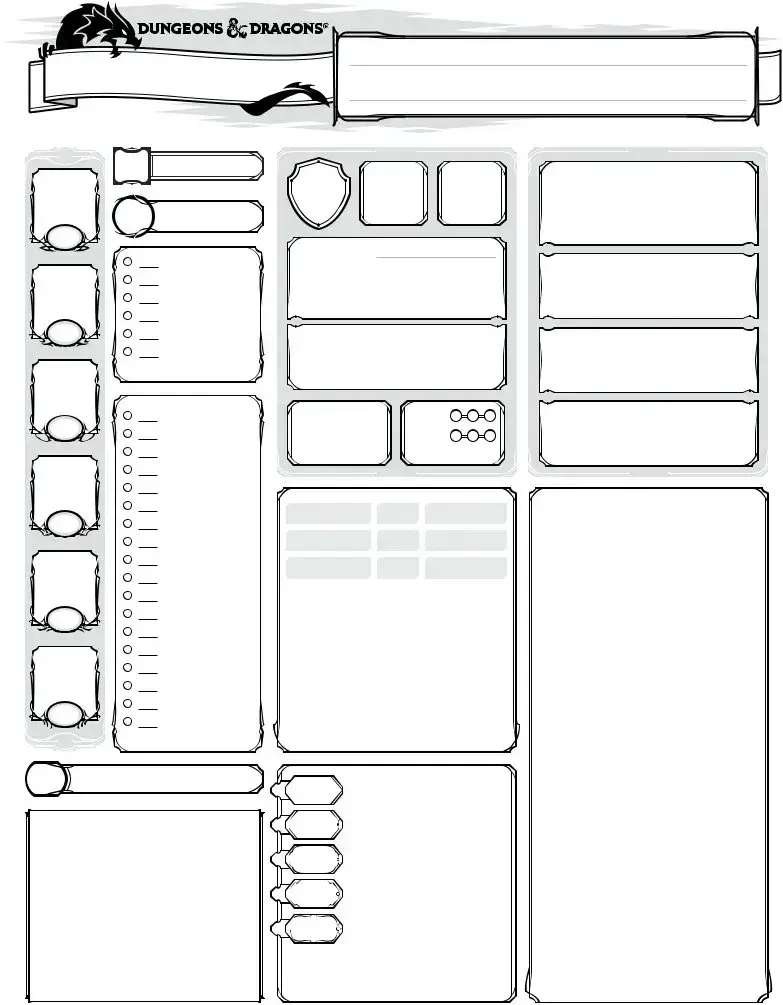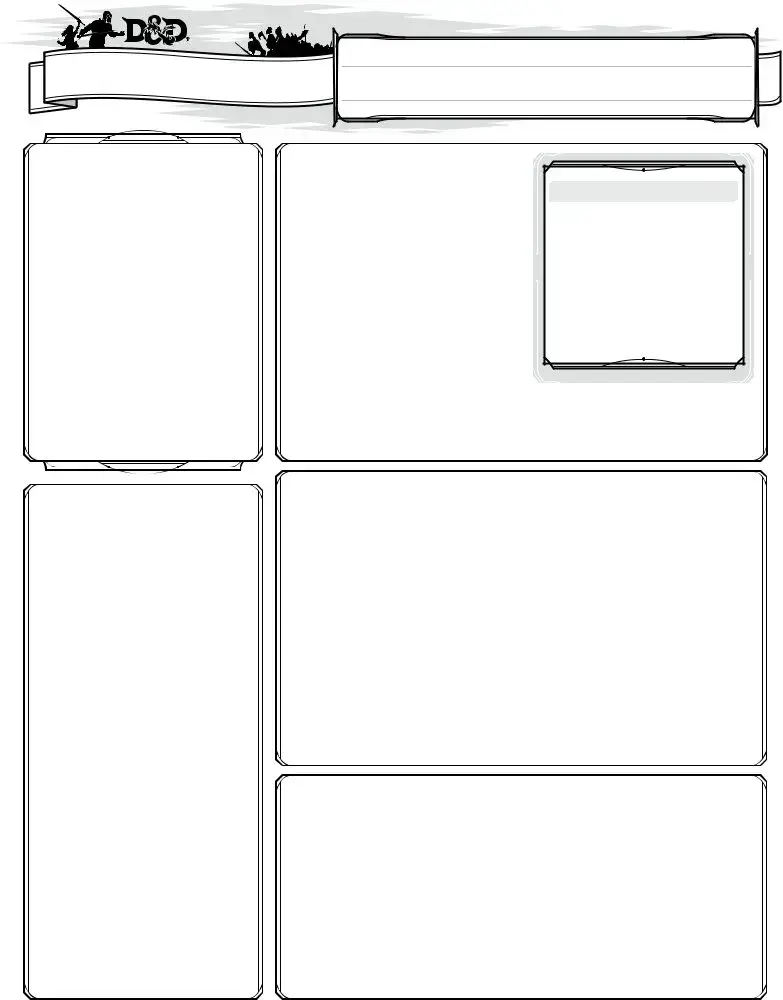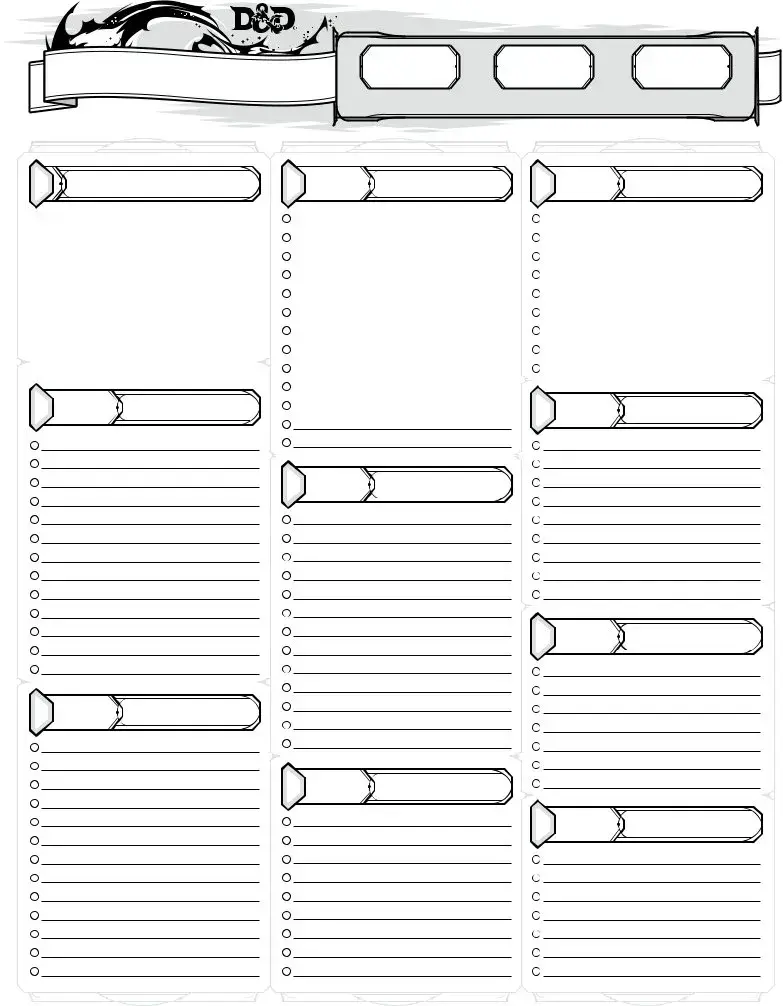The Dungeons & Dragons (D&D) Character Sheet is akin to a personal profile document, which is often used in various role-playing games. This profile typically includes basic information about the player, such as name, age, and background. Similarly, the D&D Character Sheet captures essential details about the character, including their name, race, class, and background. Both documents serve to provide a snapshot of an individual's identity within a game or narrative, allowing for deeper engagement with the story and gameplay mechanics.
A resume shares similarities with the D&D Character Sheet in that both highlight key attributes and experiences. A resume outlines a person’s skills, work history, and education, while the D&D Character Sheet lists a character’s abilities, skills, and experiences in their fictional world. Both documents aim to present the individual or character in the best light, showcasing strengths and qualifications relevant to their respective contexts.
Character profiles used in video games resemble the D&D Character Sheet as well. These profiles often detail a character's abilities, traits, and equipment, much like the D&D version. Players use these profiles to understand their character's strengths and weaknesses, which informs gameplay decisions. Both types of documents facilitate player engagement by providing a comprehensive view of the character’s capabilities.
In the world of tabletop role-playing games, a campaign setting document often parallels the D&D Character Sheet. While the campaign setting outlines the world and its rules, the character sheet focuses on the individual’s role within that world. Both documents are crucial for gameplay, as they define the boundaries and possibilities of the narrative, ensuring players are aligned with the game’s structure.
A character bio, often created by writers or gamers, shares common ground with the D&D Character Sheet. Both documents delve into the background and personality traits of a character. While a character bio may explore motivations and relationships in depth, the D&D Character Sheet provides a more structured overview, including stats and abilities that affect gameplay. Together, they enrich the storytelling experience.
Player profiles in online gaming communities can be compared to the D&D Character Sheet as well. These profiles often include player statistics, achievements, and character information. Just like the D&D sheet, they help players track progress and showcase accomplishments. Both serve as a means for players to connect with others and share their experiences within the gaming community.
A business card can also be likened to the D&D Character Sheet. Both documents provide essential information at a glance. A business card typically includes a person's name, contact information, and professional title, while the D&D Character Sheet lists a character's name, class, and key statistics. Each serves as a quick reference, allowing others to understand the individual or character's role and significance immediately.
Finally, a school report card bears some resemblance to the D&D Character Sheet. A report card summarizes a student's performance across various subjects, showcasing strengths and areas for improvement. In a similar fashion, the D&D Character Sheet summarizes a character's abilities and skills, providing insights into their potential within the game. Both documents serve as tools for assessment and growth, whether in an academic or gaming context.













